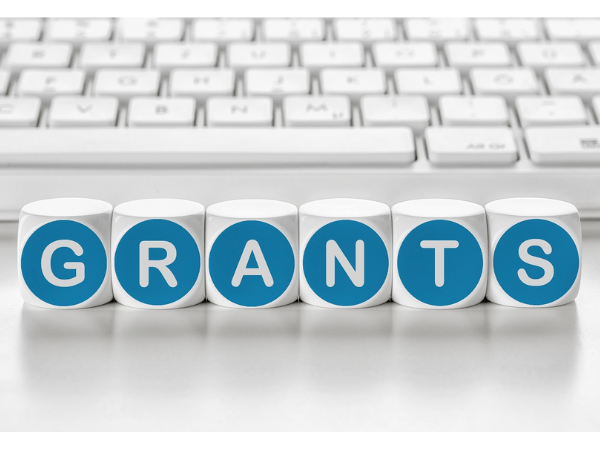
The competition for foundation and corporate grants is real. That’s especially true when you’re looking to increase award size. You need to stand out.
You can start by getting your office to treat major grants as a category of fund development, like so many nonprofits do with major gifts. You can begin by becoming an internal champion for major grants.
Forget about your title. You’re not primarily a writer, a manager, nor most other monikers used to describe this work. When it comes to gaining momentum in this space, you must be a leader.
If your nonprofit has a track record of moderate grants, making the following shifts in your everyday role will establish a pattern and culture of securing increasingly impactful awards:
From Promoter to Producer
One client had a memorable process: The grants lead would look up from the keyboard, think about the latest organizational news, and spill the contents into a beautifully written proposal. It was an impressive skill that got the organization stuck in a pattern of moderately sized foundation awards.
When we delved into the reasons why this method existed, the grant professional admitted to working solo because the organization lacked respect for and interest in the funding process.
In partnership with leadership, we elevated the work. The grants lead began speaking more with foundation program officers, and the contents of those conversations made their way into the organization’s culture: Rather than reporting on the latest grants, we empowered this staffer to infuse staff meetings with intel about what foundation partners cared about in their grantees.
What excited those funders had broad appeal across all of this nonprofit’s donors, funders, and partners. Much of it was actionable, such as trimming the number of outcomes measures from ten to three key indicators. This person sparked discussions that enabled deeper—and larger—partnerships.
New messaging soon populated not only proposals but also social media posts, talking points, and presentations. The organization took action across departments. Its grant revenue quickly doubled, and its overall revenue has skyrocketed since.
This staffer was no longer just a skilled writer but instead produced and influenced content like a movie mogul might.
From Transactional to Transformative
Years ago, I volunteered with a safety net group that sought funding to expand its facilities. I attended a site visit with staff and a potential foundation funder. With our hard hats on, staff was eager to point out the coming amenities. The program officer asked few questions about the vast new kitchen or its sub-zero freezers. Every question focused on this kitchen’s potential to make a lasting impact for the families this nonprofit served.
Yes, your funder is paying for that freezer. But it is investing in the transformation that the freezer brings—in this case, all that nourishment does to underpin a healthy and productive life.
When your intuition is to think, write, and talk about major grantmakers’ lasting impact, you’re establishing a culture that attracts transformational philanthropy.
This might seem like Grants 101, but I’ve seen many advanced professionals slip into monologues about staffing or systems or freezers because that’s what they see every day. It’s an especially common habit for those who work at nationally oriented nonprofits.
When you don’t regularly see those you serve, build practices that remind you and your team of the amazing potential your nonprofit has to make a lasting impact. Post photos or testimonials of those you serve. Highlight success stories at the beginning of staff meetings. Create ongoing ways to build impact into the fabric of your organizational culture.
From Investor to Insider
When one client secured its first seven-figure grant, the funder was also generous in words, saying, “You are doing such important work, and it’s an honor to be part of that.” At that point, being “part of that” meant funding the work.
This nonprofit made it a goal to deepen the foundation’s connection to the organization. That effort was so successful that, two years later, the same foundation staffer quipped, “When we get that next grant, the impact will…”
From you to we. That’s what you’re hoping your largest funders are thinking when they consider where your nonprofit is headed next. Even if you don’t hear your program officer use that word, look for clues that this person feels like a part of your team.
This might be one of the most important reasons to get your office to frame its major-grants work as major. While grantseekers know that they need to cultivate and steward their largest funders, it’s imperative to give them equivalent attention as high-net-worth individuals. Both constituencies build a community of supporters that can be with you for the long run. Even if the funding ends, these are people who can connect you to the next investor.
Major Grants Begin With Meaningful Changes
When you operate with a modest approach to grantseeking, you only find the opportunities right in front of you, just like that writer who spent so much time behind the keyboard. In contrast, when you adopt a major-grants mindset, you create a culture that exudes innovation, creativity, and connection among its supporters.
You can get started right away:
- Become a producer. Show your colleagues that major-grants preparation adds value across your office. Infuse your largest funders’ insights into staff meetings.
- Focus on the transformative. Zero in on what’s making the biggest difference for those you serve.
- Give your funders insider status. Bring your foundation friends more squarely into your nonprofit’s circles, and you’ll build relationships that go beyond one grant.
- Learn more about major grants. Attend GrantStation’s webinar on March 9 for more detailed information about how to secure major grants for your nonprofit.
Sure, major grants come out of stellar proposals and relationships. They also come when grantseekers show themselves to be leaders.